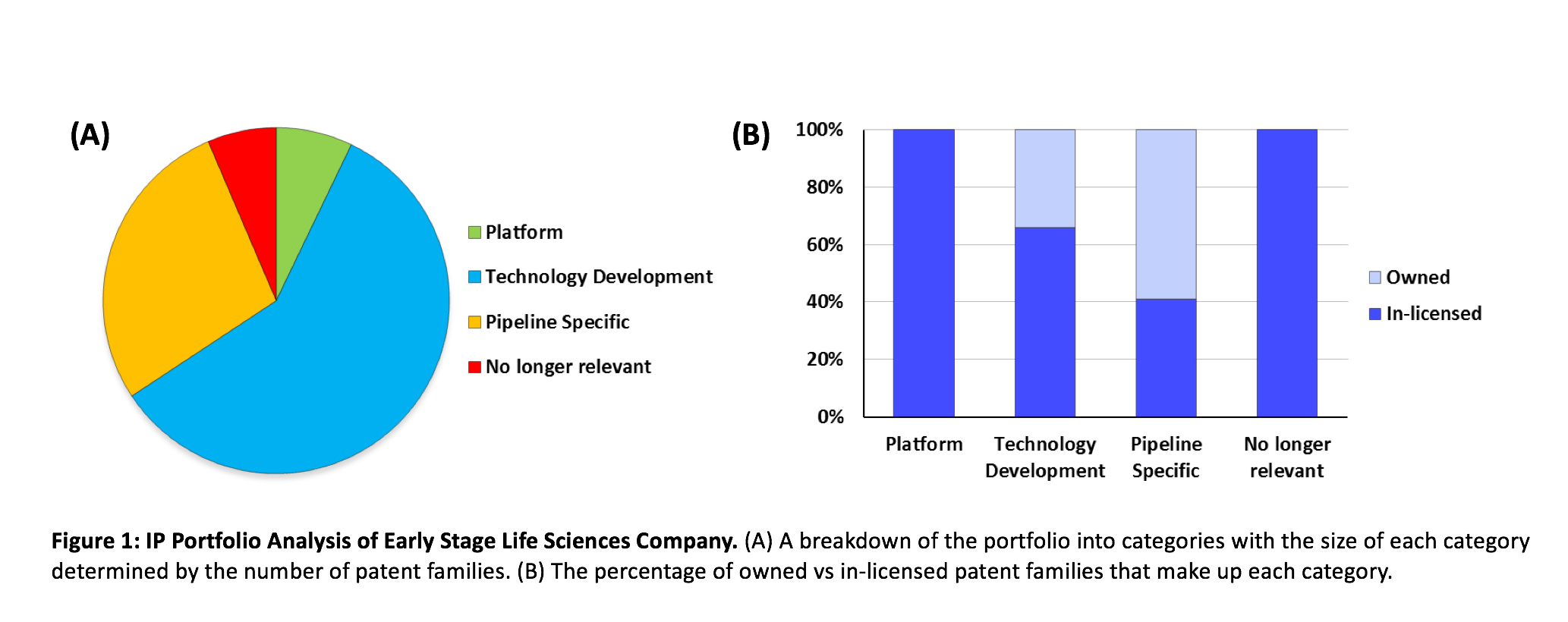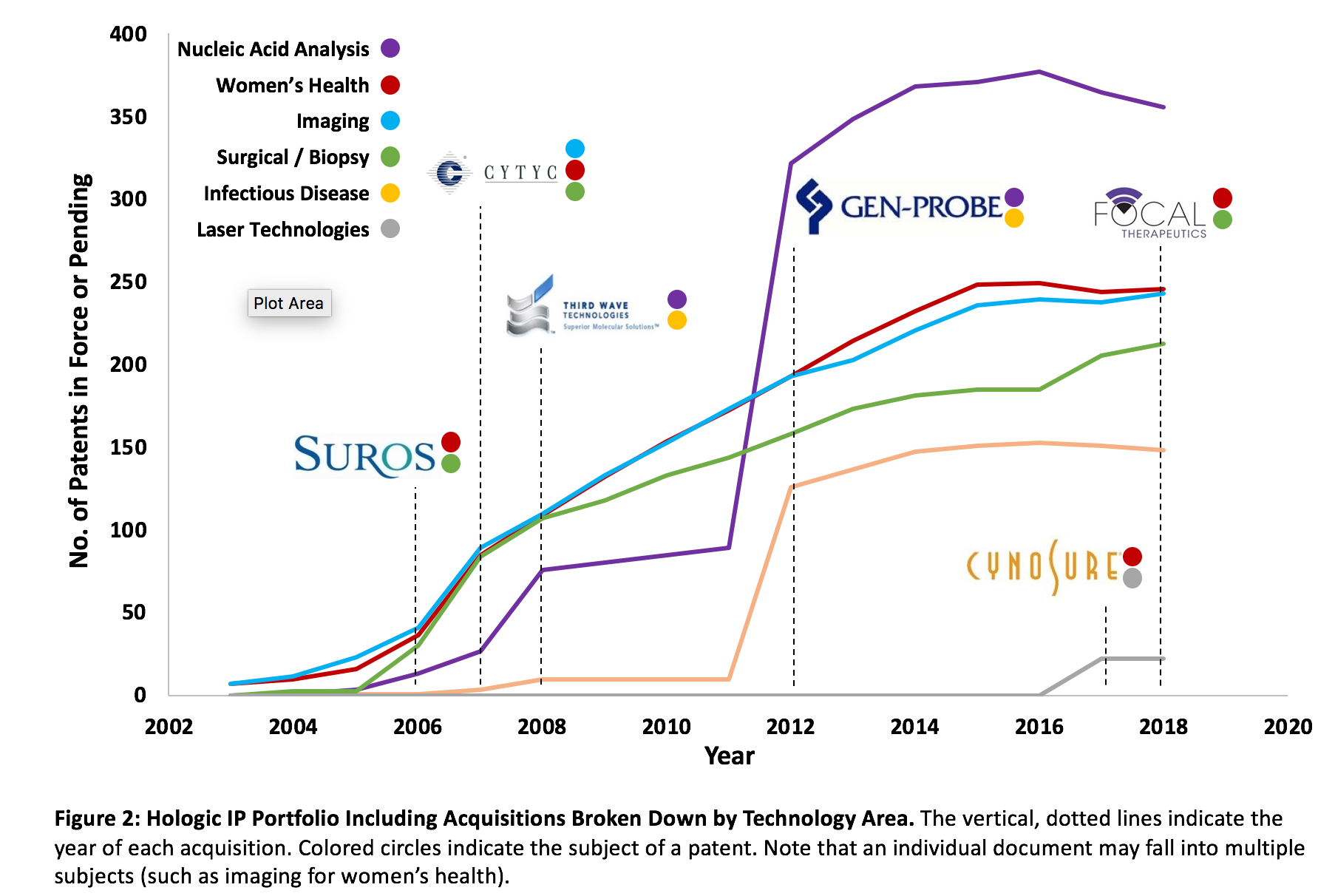IP Analysis Provides Insight to Formulate an Effective Business Strategy
Creating an IP portfolio strategy that includes R&D, in-licensing, out-licensing, and mergers and acquisitions can help businesses stay ahead of the competition.
Every biopharma company operates in a rapidly changing space where intellectual property (IP) is critical to maintain a strategic advantage.1 From our extensive experience conducting IP analyses for a range of biotech and biopharma companies, spanning privately-held startups to mature public firms, we have found that a common issue is the need for an accurate and thorough understanding of their current patent portfolio. Because IP acquisition requires significant investment, companies must ensure that procurement efforts remain productive and cost-efficient. This necessitates an alignment of the portfolio with current and future goals, and rapid diagnosis of any misalignment to facilitate a proper correction strategy.
Managing an IP portfolio requires a strategy that brings together R&D, in-licensing, out-licensing, and mergers and acquisitions. Direct oversight of a company’s portfolio is typically performed by the legal department, but determining which of these processes is best for a given project is a critical decision involving input from corporate development, compliance, and research executives. Of significant importance is an analysis of a company’s own IP (self-audit), which should be performed on a regular basis to pro-actively identify areas in need of improvement. This includes evaluating whether the company’s current IP portfolio is sufficient to support its business strategy, as well as identifying patents that are no longer useful to the company. A portfolio analysis is insightful for companies at any stage, although start-ups may implement the information differently than mid-size or fully-mature companies. This article will emphasize the need to strategically manage an IP portfolio and why an analysis of a company’s own IP is a necessary first step.
Building an IP portfolio for early stage companies
Start-up and early stage companies spun-out from academia typically have limited capital, and therefore must utilize a combination of patent in-licensing and R&D to build out an IP portfolio. We illustrate this point using a portfolio analysis that we performed for an early stage life sciences company. The company currently has access to nearly 1,000 patents and applications, spanning around 150 unique families. Of these, internal R&D efforts have procured approximately 40% of the patent families, whereas in-licensing allows access to the remaining documents. The portfolio can be broken into broad patent categories that include Platform (7% of total), Technology Development (59% of total), Pipeline Specific (indications, delivery methods, etc.; 28% of total), and No Longer Relevant (6% of total). (See Figure 1A).
Click to enlarge.

Further analysis of the portfolio shows that the R&D-procured IP is focused solely on the Technology Development and the Pipeline Specific patents. The in-licensed IP makes up the entire collection of Platform IP, most of the Technology Development IP, and a minority of the Pipeline Specific IP (See Figure 1B). This is a common mix of patent classes for early stage life sciences companies, with the in-licensed IP protecting the broader Platform technology and the in-house R&D IP becoming more prevalent as the patent coverage narrows. As the company grows, it can continue to build out a robust R&D operation to expand the applications of the in-licensed technology and begin developing their own Platform IP for other technologies, thereby reducing long-term dependence on in-licensing.
Another important aspect of managing an IP portfolio for an early stage company is to maintain cost-efficiency. Often, early stage companies will initially in-license IP covering multiple technologies, some of which are never pursued. This can be seen in Figure 1A and 1B, where 6% of the total portfolio falls into the No Longer Relevant category, which is comprised solely of in-licensed IP. Over 7% of the several million dollars spent annually on prosecution for the in-licensed R&D is committed to these patent families that the company no longer utilizes. For an early stage company, this represents significant capital that could be put towards other projects. Although outside the scope of our analysis, there is also the option to out-license IP that is no longer relevant, which can include up-front, milestone, and royalty payments totaling tens of millions of dollars.2 Clearly, there is an urgent need for constant examination and maintenance of a company’s own IP portfolio to eliminate unnecessary costs and increase revenue opportunities.
Acquisitions are another way to build an IP portfolio
R&D can be a slow, risk-laden process that is too inefficient for a quick pivot or product expansion. If another company already has IP covering a technology and experience using it operationally, buying the company and integrating its IP and processes can be much more efficient. For mid-level and large companies, acquisitions represent an accelerated means to obtain IP to cover future projects as well as a way to supplement ongoing business operations.
We recently performed an IP portfolio analysis on Hologic, a medical device company, with a particular focus on acquisitions (See Figure 2). Hologic seems to take one of two distinct strategies to procure IP for different technology categories. The first is to build up its portfolio with a combination of successful investments in R&D and acquisitions that contribute a small volume of IP. The women’s health, imaging and image processing, and surgical/biopsy portfolios have steady growth from internally-developed IP and further contributions from purchasing Suros Surgical Systems ($248 million in 2006), CYTYC ($6.2 billion in 2007), Cynosure ($1.66 billion in 2017), and Focal Therapeutics ($125 million in 2018).
Click to enlarge.

The second strategy that Hologic employs is to limit IP procurement from R&D (due to either a lack of investment or a lack of successful projects) and focus on acquisitions that contribute a large volume of IP to drive portfolio growth. This method has been used in the nucleic acid analysis and infectious disease spaces. A large majority of the portfolio growth is due to the acquisitions of Third Wave Technologies ($580 million in 2008) and Gen-Probe ($3.97 billion in 2012), with Gen-Probe drastically strengthening Hologic’s portfolio in these fields.
In total, Hologic spent just over $13.6 billion on acquisitions from 2002-2018 (note that the majority of this analysis has excluded several acquisitions that contributed a very limited volume of IP, but these acquisitions are included in the monetary total provided here). This is in contrast to just under $2 billion invested by Hologic in research and development over that same time period.3 Clearly, there has been a concerted effort by Hologic to combine investments in R&D with acquisitions to develop an IP portfolio, with the majority of capital going towards the acquisitions.
The use of acquisitions for different strategies that Hologic employs is a great model to follow, and the first step is to perform an IP portfolio analysis to identify any strengths and weaknesses. This needs to be linked to the business strategy to ensure that the IP effectively covers the technology roadmap and supports business decisions. Projects that are winding down should have few patent applications, and projects that are ongoing or beginning should have a healthy mix of granted patents and applications.
The portfolio mix for ongoing and future projects should include a long average remaining lifespan of patents and more pending applications than lapsed documents to ensure lasting patent protection. Hologic’s portfolio mix indicates that nucleic acid analysis, women’s health, and infectious disease contain a low ratio of pending to lapsed documents (See Figure 3). Alternatively, imaging and image processing and surgical/biopsy projects tend to be more evenly mixed, and laser technology has more pending documents than lapsed. This analysis provides actionable data that Hologic could use to understand where an acquisition may be needed to bolster the portfolio. For instance, if Hologic would like to remain a presence in the nucleic acid analysis space going forward, it may be necessary to make an acquisition similar to the previous Gen-Probe deal.
Click to enlarge.

This information could also be useful in a competitive analysis. We have performed similar searches involving all players in a particular field to provide a clear picture of the competitive landscape. Such analysis is valuable in assessing the current strategy of each participant and lends insight for predicting their future directions. Understanding the current and future IP priorities of a company’s closest competitors can prove particularly useful in SWOT analysis, product development, and R&D, licensing, and M&A planning. Along these lines, this type of portfolio analysis could also be useful in identifying potential partners.
Concluding remarks
A deliberate and holistic approach should be taken when building and managing an IP portfolio. Companies are constantly looking to improve and expand their business operations, and support from a robust patent portfolio that aligns with those projects should be strategically developed. Smaller companies must remain vigilant that their IP portfolio thoroughly covers their entire pipeline but remains streamlined so capital is not wasted on unnecessary prosecution and litigation. Larger companies should be regularly examining their own patent portfolio to ensure a healthy portfolio mix and identify technology areas that need to be addressed. Analysis of competitors’ IP also provides insight into the landscape of the entire market and will help drive strategic decisions. A thorough portfolio self-assessment should be performed regularly to ensure proper implementation of IP and alignment with strategic goals.
References
- Barrett, WA. Building a strategy for maximizing intellectual property value. Bioentrepreneur. 2005. Available online at https://www.nature.com/bioent/2005/050101/full/bioent842.html
- Razgaitis R. 2007. Pricing the Intellectual Property of Early-Stage Technologies: A Primer of Basic Valuation Tools and Considerations. Intellectual Property Management in Health and Agricultural Innovation: A Handbook of Best Practices (eds. A Krattiger, RT Mahoney, L Nelsen, et al.). MIHR: Oxford, U.K., and PIPRA: Davis, U.S.A. Available online at http://www.iphandbook.org/handbook/ch09/p03/
- Hologic, Inc. 10-K Annual Report (2002-2018). Retrieved from https://www.sec.gov
Michael Conti, PhD is an Analyst for the Biotech & Pharma team at Global Prior Art, Inc. He can be reached at mconti@globalpriorart.com.
The Misinformation Maze: Navigating Public Health in the Digital Age
March 11th 2025Jennifer Butler, chief commercial officer of Pleio, discusses misinformation's threat to public health, where patients are turning for trustworthy health information, the industry's pivot to peer-to-patient strategies to educate patients, and more.
Navigating Distrust: Pharma in the Age of Social Media
February 18th 2025Ian Baer, Founder and CEO of Sooth, discusses how the growing distrust in social media will impact industry marketing strategies and the relationships between pharmaceutical companies and the patients they aim to serve. He also explains dark social, how to combat misinformation, closing the trust gap, and more.
Applying Porter’s Five Forces to Portfolio Management in Pharmaceutical R&D: A Strategic Roadmap
March 17th 2025The increasing costs and complexity of R&D in the pharmaceutical industry have necessitated the adoption of strategic portfolio management to optimize resource allocation and enhance competitive advantage.

.png&w=3840&q=75)

.png&w=3840&q=75)



.png&w=3840&q=75)



.png&w=3840&q=75)









